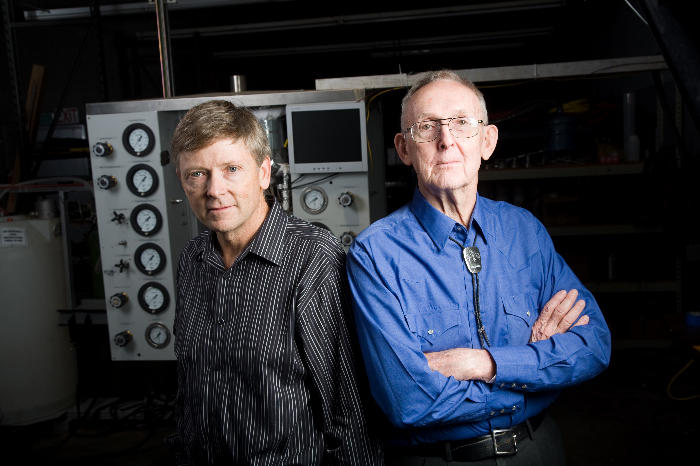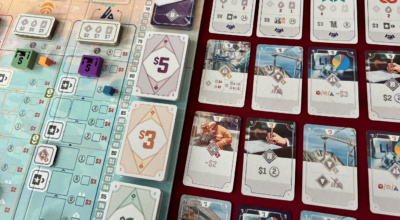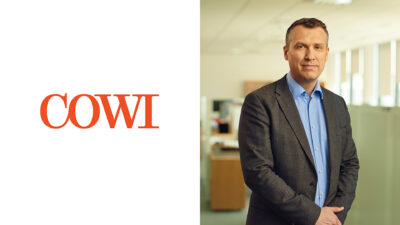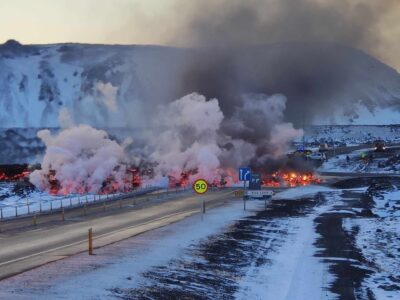Bob Potter named Green Entrepreneur of the Year
Bob Potter - the brain behind geothermal drilling technology firm Potter Drilling - named as Green Entrepreneur of the Year by the San Francisco Business Times.
Potter Drilling has been in the news ever since Google invested in it. Bob Potter is the brain behind Potter Drilling, a geothermal technology firm that is developing a new drilling technology that hopefully makes drilling cheaper and EGS more feasible. At 89 years of age he was named – already in June – as Green Entrepreneur of the Year by the San Francisco Business Times.
“Bob Potter’s scientific career began working on the first atomic bomb. He hopes to end it by figuring out how to harness renewable energy from miles within the earth.
Potter’s 70 years in science stretch back to the 1940s Manhattan Project at the military’s secret New Mexico weapons complex. In later years at Los Alamos National Laboratory, he wrestled with other scientific mysteries. While working on ways to mine rare isotopes, studied new ways to drill, which would inform his interest in geothermal energy technologies later in life.
Potter co-authored the patent on the creation of geothermal reservoirs in hot dry rock, which was tested in the mountains outside Los Alamos in the 1970s and 1980s. All modern-day work on engineered geothermal systems are based on this original work.
Still, it wasn’t until 2004, long after he’d retired from the lab and after his wife of 55 years had passed away, that he convinced his son Jared Potter to build a business around a new way to drill that would let geothermal companies drill deeper holes for less money and expand exponentially the area where geothermal can be produced.
Today the Potters head a venture-backed company based in Redwood City that will field test their hydrothermal spallation drilling technology in Raymond, Calif., in the coming months.
Exploring new techniques for drilling is expensive and they weren’t always sure they could raise the money they needed.
“Then along came Google,” Bob Potter said. Google.org, the philanthropic arm of the Mountain View-based search company, invested $4.5 million in the company in 2008 and it’s grown from just a few employees to 16. When the U.S. Department of Energy’s program was recapitalized with federal stimulus funds earlier this year, Potter Drilling was granted $5 million. That’s brought forward the field testing of its technology.
At 89, Bob Potter still drives himself to the office every day. And he’s still using scientific skills honed over decades that began with three failed attempts to join the military in the early 1940s because of hayfever, bad vision and an irregular heartbeat.
On his fourth try, Potter made it into the Army Special Training Program. He was sent first to the University of Minnesota to study chemical engineering. In 1942, he was assigned to the Manhattan Project and sent to Los Alamos.
“It was certainly the seminal thing in my life — the bomb,” said Potter.
When the atomic bomb ended World War II, Potter returned to Los Alamos as a civilian and worked on the enrichment of tritium, a radioactive form of hydrogen gas necessary in creating nuclear reactions. It was used in the trigger of the first hydrogen fusion bomb. Potter’s thought for many years about his involvement in building those weapons, but has made peace with it, saying it in all likelihood they did help keep America safe during the Cold War.
Still, after the hydrogen bomb was successfully tested Nov. 1, 1952, on the Marshall Islands, it was time to move on to new things. His lab group developed a plan to create a nuclear rocket for either bomb delivery or space travel, but their method lost out to that of a competing lab group. The group also created plans to drill to the Mohorovicic layer, the boundary between the earth’s crust and mantle beneath the earth’s surface. The Mohole project ran until 1966 but was underfunded and never reached its destination. No one has since.
Potter next worked on a program to enrich rare isotopes of carbon, oxygen and nitrogen for use in scientific experiments. These isotopes were produced by distilling liquid nitrogen and carbon in deep columns buried in holes in the ground — and piqued Potter’s interest in drilling and geology.
By 1970 Potter had read an article in a scientific journal on cracking rock deep beneath the earth’s surface — a process called hydraulic fracturing — to create a place to bury isotopes. While investigating drilling techniques for isotope separation, Potter learned about hydrofracturing and was the first to realize that fracturing rock could be used to mine heat from the earth.
“No one had ever looked at artificial ways to get geothermal energy,” Potter said. “So I thought, why not go after geothermal energy by hydraulic fracturing?”
Potter was the principal inventor of the “Hot Dry Rock” concept and the lab ran several deep earth tests in the 1970s, which set the stage for the Department of Energy’s Engineered Geothermal Systems (EGS) program that aims to increase geothermal energy in the United States. EGS can increase the capacity for geothermal energy — a carbon-free source of energy that takes up less land than many renewable technologies and in theory can be produced cheaply enough to compete with coal.
Though Potter technically retired in 1984, he never stopped thinking about engineered geothermal systems. He and MIT professor Jefferson Tester were granted a patent for Potter’s hydrothermal spallation drilling concept in 1998. Potter Drilling’s techniques rely on using superheated water rather than diamond-tipped drill bits or other components that would have to be brought back to surface level for replacement. It hopes to prove this can allow it to drill to greater depths — two to five miles down — and at less cost. Drilling represents half the cost of an EGS, and the risk of an expensive “dry hole” is a deterrent to investors.
Jared Potter said working with his father has been an incredible — though sometimes trying — experience.
“Dad has a way about him,” says son Jared Potter, CEO of Potter Drilling. “He’s extremely inventive and creative person… he’s kind of a Thomas Edison kind of person. But Dad recognizes this, for his ideas to get to the real world, he needs a support structure. At Los Alamos, they had a lot of people and dad was able to continuously inject his ideas into the system and people would run with them. We’re trying to do the same thing here: take his ideas and turn them into practical reality.
Source: San Francisco Business Times


















